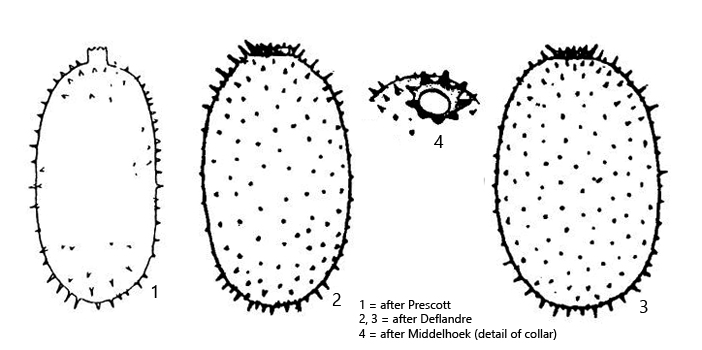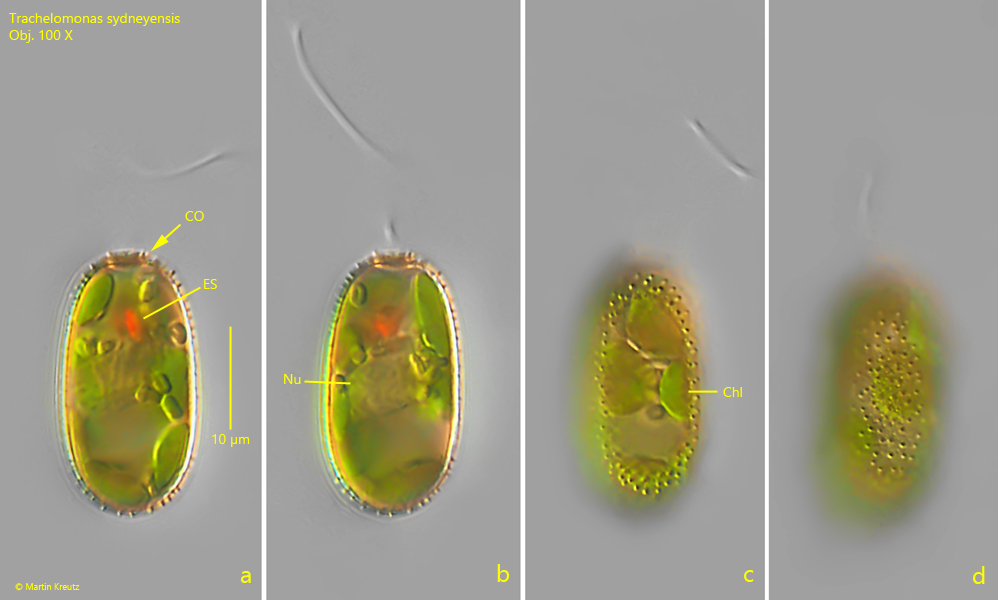Trachelomonas sydneyensis
Playfair, 1915
Most likely ID: n.a.
Synonym: n.a.
Sampling location: Simmelried
Phylogenetic tree: Trachelomonas sydneyensis
Diagnosis:
- lorica ellipsoidal to longitudinal oval
- length 31–42 µm
- apical pore with low collar with short spines
- sparsely distributed spines, at anterior and posterior fouth more densely
- chloroplasts large with irregular margins
- eyespot elongated
- flagellum twice of body length

I rarely find Trachelomonas sydneyensis in the Simmelried. I have not yet been able to find this species in my other sampling sites.
Characteristic of Trachelomonas sydneyensis is the short collar with spines and the distribution of the short spines on the lorica. There are no or only very short spines in the middle, while they become longer and more numerous towards the anterior and posterior ends. The specimens in my population were on average 10–20 % smaller than described in the literature (mostly 25–28 µm). All the specimens I observed corresponded most closely in shape to Deflandre’s drawing 2 (s. drawings above).
Trachelomonas sydneyensis can be confused with the similar species Trachelomonas abrupta and Trachelomonas ellpsoidalis. However, Trachelomonas abrupta has no collar and the lorica is granulated, not spiny. In Trachelomonas ellipsoidalis, the opening of the lorica is thickened in a ring shape, but without forming a collar. This species also has no spines.

Fig. 1 a-d: Trachelomonas sydneyensis. L = 25. Different focal planes of a freely swimming specimen. Note the short collar (CO) with spine on the margin. Chl = chloroplast, ES = eye spot, Nu = nucleus. Obj. 100 X.